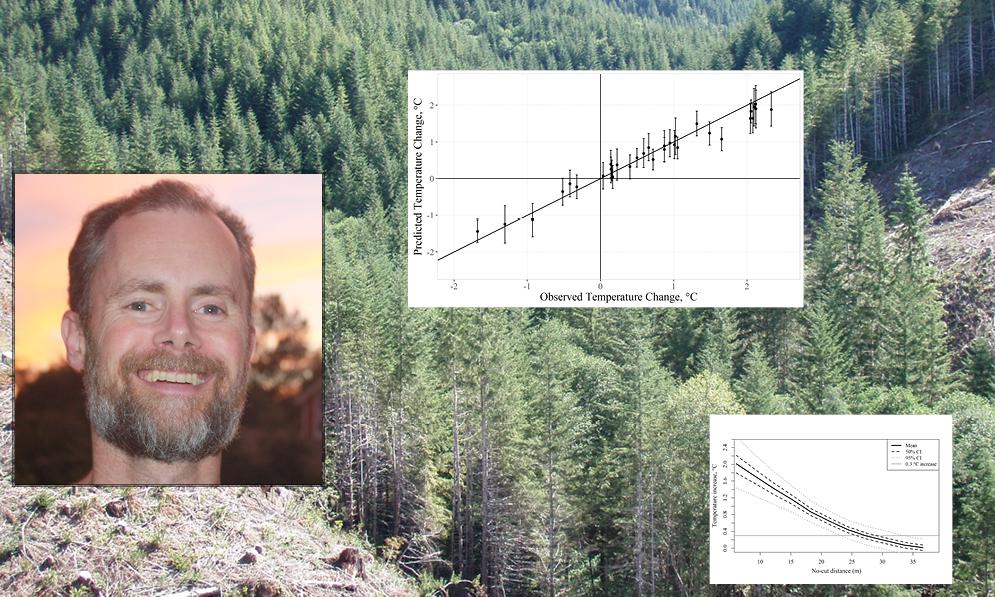Meet Jeremy Groom, MS alumni (2017), whom has been recently published and owns Data Analytics consulting firm, Groom Analytics.
What made you passionate about statitics?
"I received my Ph.D. in Ecology several years back, as a PhD student, I was surprised to find that I loved the process of analyzing data. Statistical analysis is like opening a surprise present. I found that after I designed a study, went through the trials of data collection, and brought the data together for a coherent analysis, I would finally reach the point of pushing the button and (maybe) estimating an effect or finding a pattern that has never been seen before. Even better, I'd find that the results were not exactly what I expected, and with a deeper dive, my colleagues and I would discover unexpected relationships. I think our work as statisticians is exciting."
You were recently published in Forest Ecology and Managment, your research titled, "Informing changes to riparian forestry rules with a Bayesian hierarchical model", what inspired your interest in this subject?
"Prior to entering the MS in Statistics program at OSU in 2015, I worked for the Oregon Department of Forestry's monitoring team in Salem. My primary duties included analyzing data from their RipStream study, which was, in a sense, a manipulative experiment at a landscape level. The purpose of the study was to see if Oregon's forestry rules achieved their desired outcomes. In the paper we found that not enough trees were being protected along streams to provide the shade necessary to keep the streams cool. This paper is important to me because it represents a culmination of my work for the Department, and the Department used its findings to change the state's timber harvest rules. The rules have changed to protect more trees along streams so that the streams stay cool."
Today, how are you using your research and statistics in your current position/career?
Lisa Madsen, Ph.D., (Associate Professor, OSU) and I neared the end of our series of stream temperature papers, so the research was drawing to a close. After completing the Master's degree, I started up an applied statistical consulting business, Groom Analytics, a year ago and have taken on a variety of projects. One of those involved transforming a two-stage least squares regression procedure into a Bayesian hierarchical model so that my client could get a reasonable handle on the prediction intervals of their forecast model. Conceptually this new Bayesian model was similar to the one used in the paper, so in a sense it is a continuation of the same statistical approach.
Ask the Advisor: Lisa Madsen, Associate Professor and collaborator on Jeremy's project: What impressed you with Jeremy's statistical talents?
"I collaborated with Jeremy for years on the RipStream project. As time passed, he became more sure he loved data analysis. He applied to our master's program with a goal of becoming an independent consultant. His business took off, and now he's really passionate about what he does. It's great to see."
Recent Publication: Forest Ecology and Management, 419-420 (2018) page 17-30
Abstract:
In 2012 the Oregon Board of Forestry (Board) determined that current forestry rules were insufficient at preventing the degradation of cold water in salmonid-bearing streams. Consequently, the Oregon Department of Forestry required a means for evaluating and comparing the effectiveness of newly-proposed harvest scenarios. We derived a field-data based method for simulating riparian harvest and modeling the resulting effects on stream temperature that could be used for evaluating different harvest scenarios. We simulated prescribed harvests by using previously-collected riparian stand data. To create a predictive model, we modified and joined two earlier stream temperature and shade models from Groom et al. (2011b) into a Bayesian hierarchical model. The predictive model produced parameter estimates and temperature change metrics that aligned with the previous findings. The model predicted that harvest according to a full implementation of the State forest harvest plan would on average result in a 0.19 °C increase, while the model predicted that a similarly-scaled harvest to current private forest regulation specifications would lead to an average increase of 1.45 °C. Further simulations suggested that employing a no-cut slope-distance riparian zone of 27.4 m would result in average warming below 0.3 °C of unharvested conditions. The Board considered these results along with other information and directed the Oregon Department of Forestry to develop harvest rule revisions. Those revisions became effective as of July 2017.
